Seodongyo Theme Park (서동요 테마파크)
16.9Km 15654 2021-06-10
616, Chungsin-ro, Buyeo-gun, Chungcheongnam-do
+82-41-832-9913
Seodongyo Theme Park is an open film set studio in a huge 33,000 square meter plot of land. The theme park offers various sets from Goryeo to Joseon dynasty as well as royal residences of Baekje dynasty, the commoners’ village, the village of the nobles and more. The set was the backdrop of various dramas including “Ballad of Seodong (2005), “The Great Sheer (2012)” and more. Visitors can also engage in various experience programs.
Mireuksa Temple Site [UNESCO World Heritage] (익산 미륵사지 [유네스코 세계문화유산])
17.0Km 22104 2024-04-07
362, Mireuksaji-ro, Iksan-si, Jeonbuk-do
+82-63-859-3873
Mireuksa was the largest Buddhist temple of the ancient Baekje Kingdom (18 BC-AD 660). According to Samgukyusa (historical records published in 1281), King Mu (30th king of Baekje, in power AD 600-641) and his wife Queen Seonhwa were said to have seen a vision of Mireuksamjon (the three Sanskrit) emerging from a large pond. At the time of their revelation, the king and queen were on their way to visit a Buddhist monk in Sajasa Temple on Yonghwasan Mountain (now known as Mireuksan Mountain). In response to their vision, the king drained the nearby pond and established Mireuksa Temple. The temple is believed to have shown the most advanced architectural and cultural skills of Baekje, Silla, and Goguryeo (the three main kingdoms at that time). Records indicate that King Jinpyeong of Silla even sent his craftsmen over to assist with the temple construction.
The two main features of the Mireuksa Temple Site are the stone pagoda (Mireuksaji Seoktap) and the flagpole supports (Mireuksaji Dangganjiju). The 14.24-meter-high west stone pagoda (National Treasure No. 11) is the oldest and largest Korean stone pagoda in existence. The west pagoda currently has only six tiers, but is estimated to originally have had nine. The nine-story east stone pagoda (27.67 meters in x_height) was restored to its original stature in 1993 based on historical records. Other surviving landmarks include the flagpole supports (Treasure No. 236) to the south of the stone pagodas. The 395 centimeter-tall poles are estimated to have been created during the Unified Silla period (AD 676-935) and are set 90 meters apart from east to west.
Iksan National Museum (국립익산박물관)
17.1Km 14685 2024-04-07
362, Mireuksaji-ro, Iksan-si, Jeonbuk-do
+82-63-830-0900
Iksan National Museum is located near Mireuksa Temple Site (Historic Site No. 150), one of the largest temples of the Baekje dynasty during the Three Kingdoms Period. A total of roughly 19,200 artifacts were unearthed during archaeological research in 1980-1996, and the museum was opened as Mireuksa Temple Site National Museum in 1997 to display these findings. The Stone Pagoda of Mireuksa Temple Site (National Treasure No. 11) was restored in 2009, and the site was recognized as a World Heritage by the UNESCO in 2015, afterwhich the museum name was changed to the current Iksan National Museum. The museum also offers various cultural events and programs, including on-site education, historical and cultural lectures, and summer culture school.
Sinseong-ri Reed Field (신성리 갈대밭)
17.2Km 10782 2019-09-04
125-1, Sinseong-ri, Seocheon-gun, Chungcheongnam-do
+82-41-952-9525
As one of Korea’s top four fields of reeds, Sinseong-ri Reed Field (nearly 60,000 pyeong) has also been popularized as a filming location of the mega-hit Korean movie, “JSA.”
To protect the natural environment, only 2-3% of the entire area of field of reed has been developed into a park. About 100,000 migratory birds (40 species) pass through every winter (especially in December and January). In fall, the golden fields of reeds create a romantic atmosphere along the banks of the glittering Geumgang River.
Nearby tourist attractions include a riverbank resort, Wolmyeong Park (in Gunsan), Chunjangdae Beach (in Seocheon-gun) and Hansan Ramie Fabric Museum.
* Period to see the golden fields: July to February
Baengmagang Leisure Park (백마강레저파크)
17.5Km 3055 2022-04-08
424, Wangheung-ro, Buyeo-gun, Chungcheongnam-do
+82-1833-8982
Baengmagang Leisure Park provides camping all year round as well as caravan facilities and water sports facilities. Visitors can enjoy waterski, wakeboarding, banana boat, and water playgrounds as well as outdoor swimming pool in the summer.
Baek il heon Head House (논산 백일헌 종택)
17.7Km 9208 2024-08-05
45, Jugok-gil, Sangwol-myeon, Nonsan-si, Chungcheongnam-do
+82-41-736-4166 / +82-10-2911-4166
The Baegilheon Head House (National Folklore Cultural Heritage No. 273) is the house that was bestowed upon General Yi Sam by King Yeongjo in recognition of his achievement in suppressing the Yi In-jwa Rebellion in 1728. King Yeongjo also granted Yi Sam the posthumous name ‘Baegilheon’. The house is composed of the munganchae (gate quarters) situated next to a tall gate, the ‘ㄷ’-shaped anchae (women’s quarters), and the ‘ㄱ’-shaped sarangchae (men’s quarters), which are configured in an overall square layout. The accommodation includes the munganchae, the araet sarang with a numaru (upper floor), and the wit sarang and the geonneotbang, each of which has a large toenmaru (a narrow wooden porch running along the outside of the building). Notably, the geonneotbang, which is connected with the daecheong (wooden floor) and has a cozy courtyard surrounded by a mud wall, was the living space for the eldest son of the family and his wife for many generations. As the house has been designated as a National Folklore Cultural Heritage, cooking in the guestrooms is strictly prohibited. However, the house provides breakfast prepared by the daughter-in-law of the head house free of charge. The toilets and shower room are situated in the back yard.
Baegmagang River (백마강)
17.8Km 8551 2017-08-08
Buyeo-eup, Buyeo-gun, Chungcheongnam-do
Baegmagang River (백마강), which literally means ‘the largest river in the Baekje Kingdom’, refers to the 16km-long Geumgang River.
There are many historic sites all along Baegmagang River, which flows around Mt. Busosan, including Cheonjeongdae Altar (천정대), where important national affairs of the Baekje Dynasty were determined, Nakhwaam Rock (낙화암), Joryongdae Rock, Gudeure, BusanㆍDaejaegak Pavilion, Jaondae Rock and Subukjeong Pavilion.
* Joryongdae Rock (조룡대)
A small island-like rock on the Baegmagang riverside
* Daejaegak Pavilion (대재각)
Daejaegak Pavilion is located at the Baegmagang River cliff across from the Gudeure Ferry. In this pavilion can be found a rock bed engraved with ‘Jitongjaesim Ilmodowon’ on its surface.
Baekjewon (백제원)
17.8Km 4983 2021-02-18
553, Baekjemun-ro, Buyeo-gun, Chungcheongnam-do
+82-41-832-0041
Baekjewon is a cultural complex made up of a botanical garden and Buyeo Museum. As the only botanical garden in Buyeo, Baekjewon boasts a well organized collection of plants and agricultural materials of Buyeo. Buyeo Museum's exhibitions present cultural relics, records of modern history, film and music-related materials of Buyeo from the Baekje Kingdom to modern times.
Iksan Ipjeomni Ancient Tombs (익산 입점리 고분)
18.3Km 7115 2024-04-07
80, Ipjeomgobun-gil, Iksan-si, Jeonbuk-do
+82-63-859-5875
The Iksan Ipjeomni Ancient Tombs are a group of ancient Baekje-era tumuli located 100 meters above sea level on the northeast brow of Chilmokjae Hill in Ipjeom-ri, Iksan-si, Jeollabuk-do. The burial ground covers an area of more than 18,520 square meters and is officially listed as Historical Site No. 347. To date, a total of eight tumuli have been excavated, all of which are chamber tombs.
Surprisingly enough, the tombs were first discovered in 1986 by a high school student. While digging for arrowroot, a young man from a local high school found some pieces of gold that resembled a hat. He quickly notified the authorities and it was soon discovered that the pieces of gold were in fact valuable ancient artifacts. An emergency excavation was conducted and the eight tumuli were uncovered, but unfortunately all of the tumuli except Tomb No. 1 had been severely damaged. Tomb No. 1, which is still in relatively good condition, boasts an entrance measuring an impressive 16 meters in x_height and 2 meters in x_width.
Inside the tombs archaeologists found valuable relics from the Baekje dynasty including earthenware, jewelry (a gilt-bronze hat, gold earrings, glass beads, etc.), harnesses and ironware. Given the shapes and the types of the pieces found, historians estimate that the tumuli were built in the 5th century. Since the gilt-bronze hat is similar in shape to those found in Japan, experts believe that there was an active exchange between the Baekje people and the people of Japan.
Baekje History & Culture Museum (백제역사문화관)
18.3Km 12929 2021-03-03
455, Baekjemun-ro, Buyeo-gun, Chungcheongnam-do
+82-41-408-7290
Located in Baekje Cultural Land, Baekje History & Culture Museum shows the history and culture of the Baekje period. Instead of exhibiting actual artifacts, the museum uses visual aids such as graphics, media, and miniatures to depict important cultural heritages and relics.
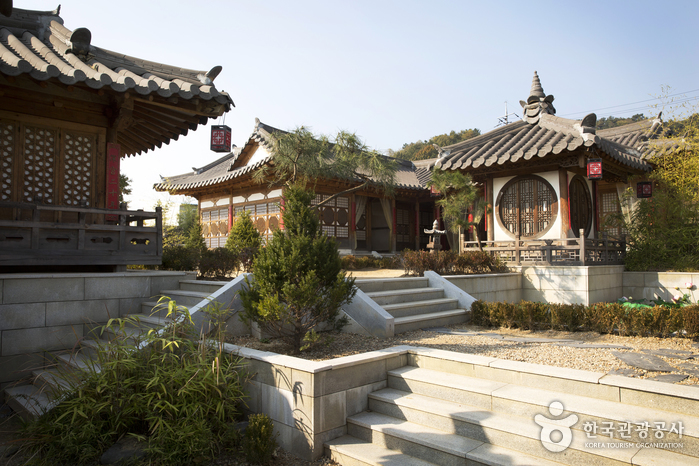
![Mireuksa Temple Site [UNESCO World Heritage] (익산 미륵사지 [유네스코 세계문화유산])](http://tong.visitkorea.or.kr/cms/resource/91/2514991_image2_1.jpg)
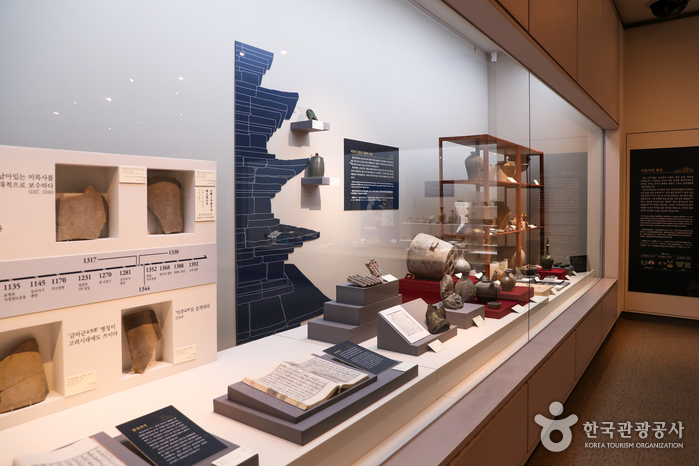
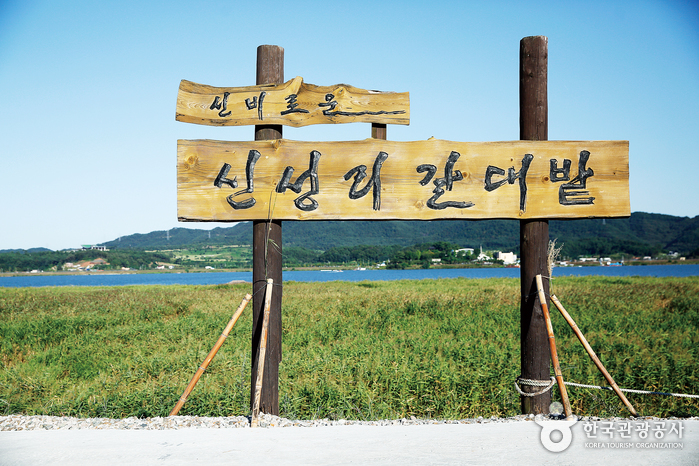
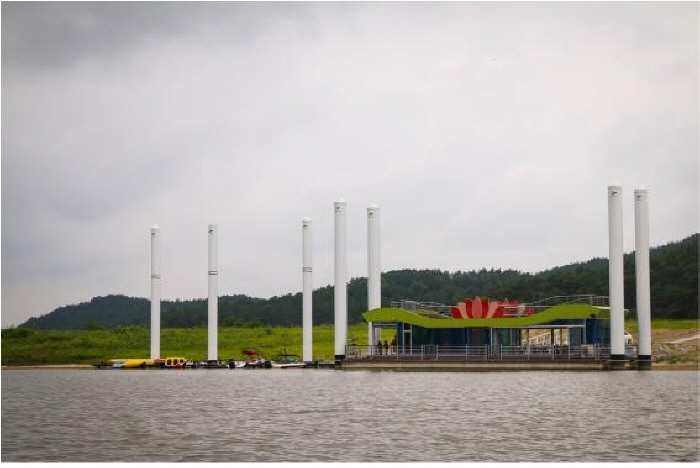
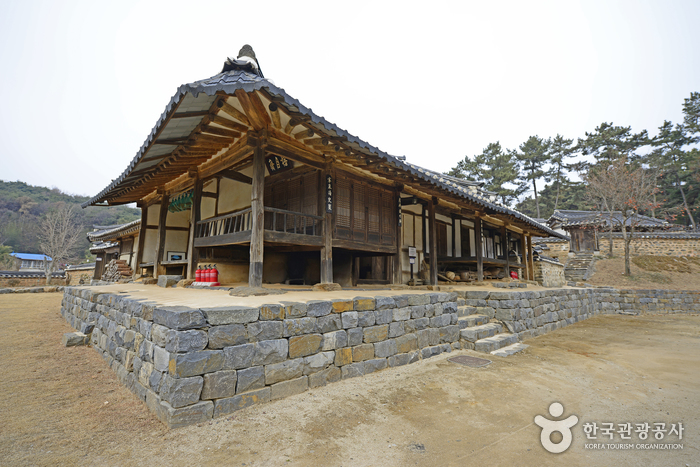
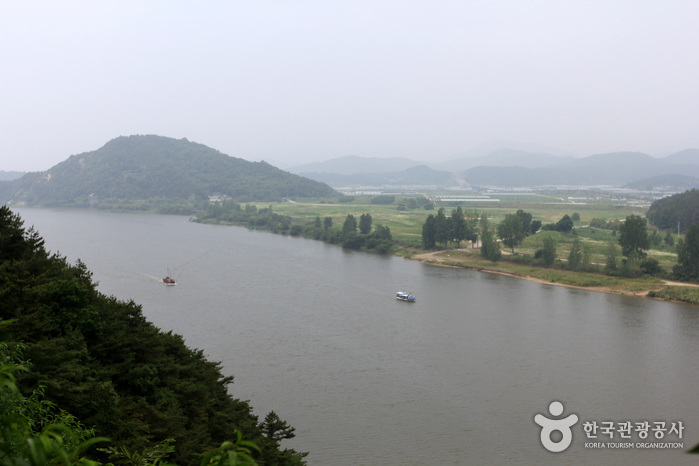
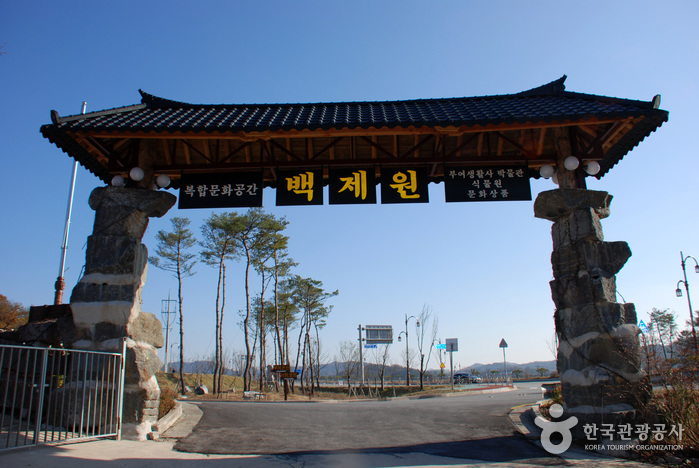
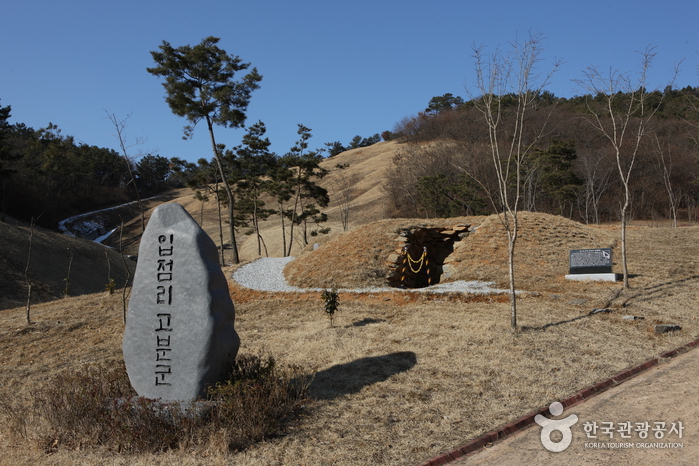
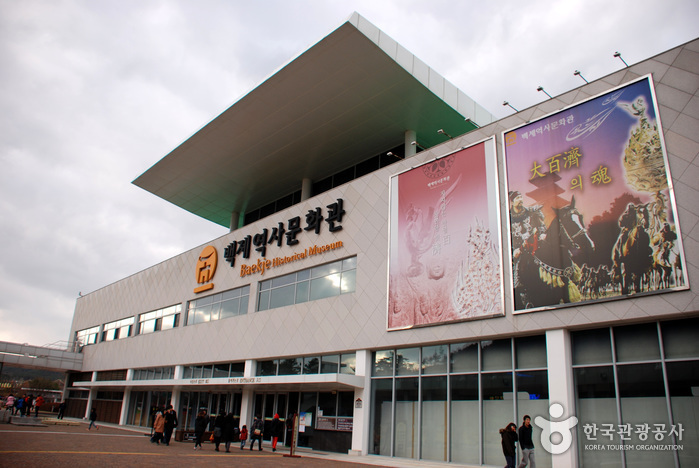
 English
English
 한국어
한국어 日本語
日本語 中文(简体)
中文(简体) Deutsch
Deutsch Français
Français Español
Español Русский
Русский